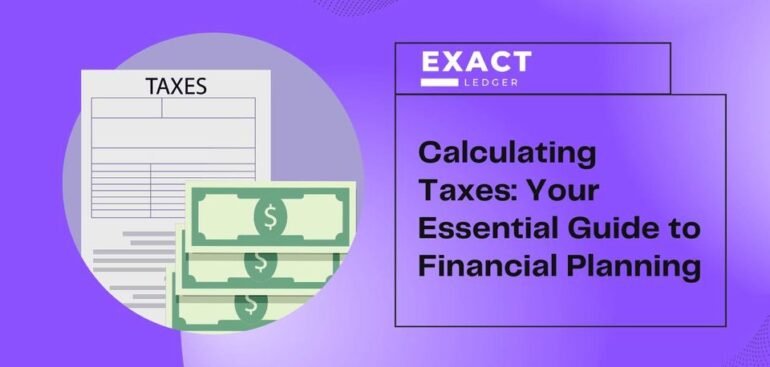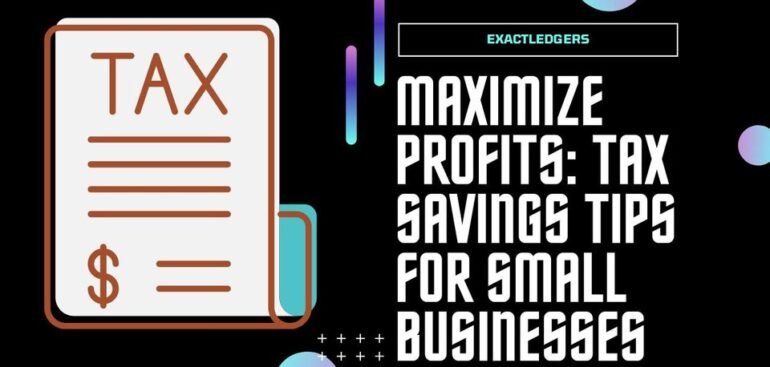Running a business involves various financial responsibilities and one of the most critical is tax planning. Understanding how much a business should set aside for taxes is essential to avoid unexpected tax bills and financial strain. In this blog post we will explore the factors influencing tax savings tips for accurate calculations and strategies to ensure your business stays financially prepared.
Importance of Knowing How Much Should a Business Set Aside for Taxes
Knowing how much a business should set aside for taxes is crucial for maintaining healthy cash flow and avoiding penalties. Proper tax planning allows businesses to forecast expenses accurately and allocate funds appropriately. This ensures that tax obligations are met without disrupting day to day operations.
Factors Influencing How Much Should a Business Set Aside for Taxes
Several factors influence how much a business should set aside for taxes. These include the type of business entity annual revenue deductible expenses and specific tax regulations applicable to the industry. Understanding these factors helps in making precise estimations and ensures compliance with tax laws.
Calculating How Much a Business Should Set Aside for Taxes
Calculating how much should a business set aside for taxes involves assessing total income deducting eligible expenses and applying the relevant tax rates. Businesses should consult with a tax professional or use reliable tax software to determine the accurate amount to how much should a business set aside for taxes
Tips for Setting Aside the Right Amount for Business Taxes
- Monitor Revenue and Expenses: Regularly track your business’s revenue and expenses to estimate taxable income accurately.
- Understand Tax Rates: Familiarize yourself with federal state and local tax rates that apply to your business.
- Consult a Tax Professional: Seek advice from a tax professional to ensure compliance and accurate tax planning.
- Use Tax Software: Utilize tax software to automate calculations and stay updated with tax regulations.
Benefits of Properly Setting Aside Taxes for Your Business
Properly setting aside taxes for your business ensures smooth financial operations avoids legal issues and prevents cash flow disruptions. It also helps in building trust with stakeholders and maintaining a good reputation with tax authorities.
Common Mistakes to Avoid When Setting Aside Taxes
- Underestimating Tax Liability: Failing to accurately estimate tax liability can lead to insufficient funds and penalties.
- Ignoring Quarterly Payments: Neglecting to make quarterly tax payments can result in interest and penalties.
- Not Keeping Accurate Records: Poor record keeping can lead to errors in tax calculations and missed deductions.
Strategies to Ensure Adequate Tax Savings
- Create a Tax Savings Account: Open a separate account dedicated to tax savings and regularly transfer estimated how much should a business set aside for taxes.
- Automate Savings: Set up automatic transfers to the tax savings account to ensure consistent savings.
- Review Financial Statements: Regularly review financial statements to adjust tax savings based on income fluctuations.
Utilizing Professional Services for Tax Planning
Hiring a professional tax advisor can provide personalized strategies on how much a business should set aside for taxes. Professionals can offer insights into tax deductions credits and efficient tax saving techniques tailored to your business needs.
Introducing ExactLedgers as Your Tax Partner
To further simplify your tax planning and ensure you’re always on top of your tax obligations consider partnering with ExactLedgers. ExactLedgers is dedicated to helping small business owners like you navigate the complexities of tax planning and compliance. With their expert guidance you can accurately determine how much to set aside for taxes, maximize your deductions and avoid costly penalties.
Their team of experienced tax professionals offers personalized support and cutting edge tools to streamline your financial management. By working with ExactLedgers you can focus on growing your business while they handle the intricacies of tax planning and compliance.
ExactLedgers | Your Companion for Tax Services
ExactLedgers is not just your tax partner but your comprehensive companion for all tax services. They offer a wide range of services including tax preparation tax planning and ongoing tax support tailored to meet the unique needs of your small business. With ExactLedgers by your side you can ensure that every aspect of your tax obligations is managed efficiently and effectively.
Conclusion
Staying financially prepared involves understanding how much a business should set aside for taxes. By considering the factors influencing tax liability, accurately calculating taxes and implementing effective savings strategies businesses can ensure they meet their tax obligations without financial stress. Proper tax planning not only helps in avoiding penalties but also contributes to the overall financial health of the business.
Frequently Asked Questions
How do I calculate how much my business should set aside for taxes?
To calculate how much should a business set aside for taxes, assess your total income, subtract eligible expenses and apply the relevant tax rates. Consulting with a tax professional or using tax software can help ensure accuracy.
What percentage of income should a business set aside for taxes?
The percentage of income a business should set aside for taxes depends on various factors including the type of business entity applicable tax rates and deductions. Generally setting aside 20-30% of your income is a good starting point but it’s best to consult with a tax advisor for specific guidance.
When should a business start setting aside money for taxes?
A business should start setting aside money for taxes as soon as it begins earning income. Regularly setting aside funds helps avoid large unexpected tax bills and ensures you can meet your tax obligations.
Are there tools to help businesses set aside the right amount for taxes?
Yes there are several tools available to help businesses set aside the right amount for taxes including tax software accounting software and financial calculators. Additionally consulting with a tax professional can provide personalized guidance.
What happens if a business doesn’t set aside enough for taxes?
How Much Should a Business Set Aside for Taxes it may face penalties, interest charges and cash flow issues. Proper tax planning helps avoid these problems and ensures you can meet your tax obligations without financial strain.
Can a tax professional help determine how much to set aside for taxes?
Yes a tax professional can help determine How Much Should a Business Set Aside for Taxes by analyzing your financial situation, income expenses and applicable tax laws. Their expertise ensures accurate calculations and compliance with tax regulations.


